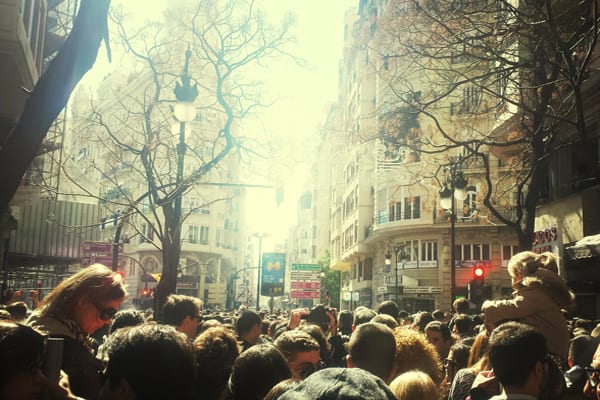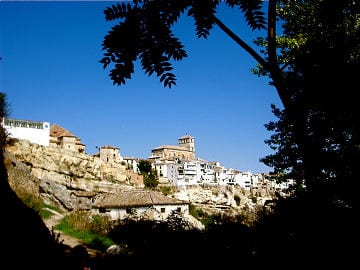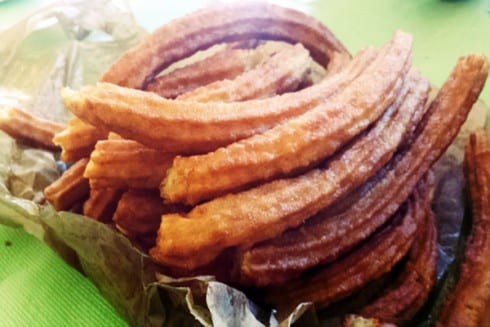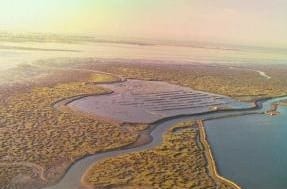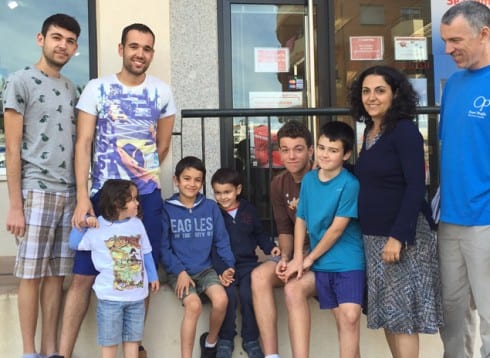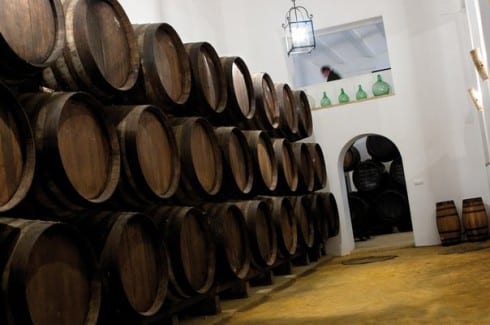
LAST week I ventured out of Andalucia.
Although I’ve fallen in love with Granada, I fancied a change of scenery and in Spain there’s always some form of a fiesta happening somewhere in some shape or form. There was no better place therefore, than Valencia to get a taste of the Fallas festival, known in English as The Fires.
I had never actually heard anything about what the Fallas is until a few days before I went. After doing a bit of background reading on the internet, however, I decided that it would be a completely wasted opportunity if I didn’t go. From what I had read online, it sounded like one big crazy party.
It was exactly that and a whole lot more.
The Fallas happens every March in Valencia. The festival celebrates the arrival of spring and is in honour of Saint Joseph, whose feast day, March 19, is the closing night of the fiesta. Ninots, giant colourful papier-mâché like puppets majestically appear on every street corner around the city and these are the main characteristic of the event.
Each one of these giant structures varies in design and theme which is what makes them so aesthetically appealing. Some convey political satire; others may focus on well-known film characters or are simply based on their creators’ imagination. So what happens to these beautiful, authentic, aesthetically appealing figures at the end of the festival? What do the falleros do with their magnificent works of art that they’ve spent hours arduously creating?
They burn them of course.

Yes, just what every artist does to celebrate their grand masterpiece. Historians believe that the origins of the fiesta go back to the time when carpenters cleared out their workshops at the end of winter, throwing out scraps of wood and burning them in the street on the day of St Joseph. On March 19, Valencia is magically transformed into a city of flames in what is the most spectacular bonfire night in Spain, when the combustible ninots are burnt around the city. Unfortunately March 19 fell on a Thursday this year which meant that I wasn’t in town to actually see the event. I saw it on the national news though and dare I say Guy Fawkes would have been proud.
Another important feature of Las Fallas is the mascletá, which is Spanish for ‘concert of gunpowder’. This is a lovely, apt translation, although having watched the mascletá three times over the course of the weekend; I’ve concluded that this is rather tame interpretation of the event. This is when then whole city of Valencia gathers together at two o’clock in the city square to witness a truly almighty, roaring, ear-splitting, bomb-like detonation of gunpowder explosives.
Never had I experienced anything like it.
Everyone in Valencia stops what they are doing at two o’clock to go and witness this seven-minute deafening gunpowder display

It’s the most important part of the day for Valencians. The young and old cram into the city square, toddlers clamber onto the shoulders of their parents and those that didn’t have the patience to wait for the spectacle beforehand pour into the closed off surrounding roads or watch from building windows. Beggars push their way through the crowds selling beers, and when the display ends the thunderous explosions are quickly replaced by loud Valencian music. On the Sunday, I waited for over an hour before the mascletá was due to start because my friends and I had not managed to see it from inside the square. Even by then I was tightly sardined into the crowd (reluctantly hungover I admit) on a rather hot day. I passed the hour long wait by wishfully thinking of a thousand other places I would have rather been than at that moment, all the while wondering whether my eardrums would last the deafening performance of noise.
Daresay it was worth the wait. By seeing and (of course) hearing the display from inside the square did I actually understand why it’s so special. It might sound silly, seeing a firework display in broad daylight (I always resent English idiots who set fireworks off for fun in the middle of the day in November).
The experience of watching a mascletá, however, is different – it’s out of the ordinary. Since it happens in daylight, it’s the sound, not the fiery lights, which impress
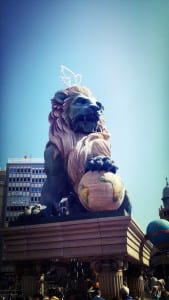
Sound, in fact, plays a huge role throughout Fallas week. When you walk around the city, a child would set off a fire cracker right behind you just for the fun of it. Teenagers would spend most of the day in parks with their friends, setting off actual miniature fireworks and sparklers, or more firecrackers, surprising passers-by and making them jump. At times it was really surreal – it almost seemed like the city was a war zone with what sounded like bombs and explosions being set off at unpredictable moments. I remember seeing one kid let rip a firecracker right behind a bus as it swerved around a street corner, just because he and mates wanted to. It was crazy.
If you every get a chance to go to Valencia, do so during Fallas week. This beautiful city on the Mediterranean coast boasts a different atmosphere to that of any Andalusian ciudad. It’s stunning architecture, the excitement of the mascletá and the street food markets all contribute to a lively and unique atmosphere. And of course, there’s paella. Everywhere. The best paella in Spain.
Oh and if you’re hard of hearing, fear not. Las Fallas will prove you’re not.
Click here to read more News from The Olive Press.

